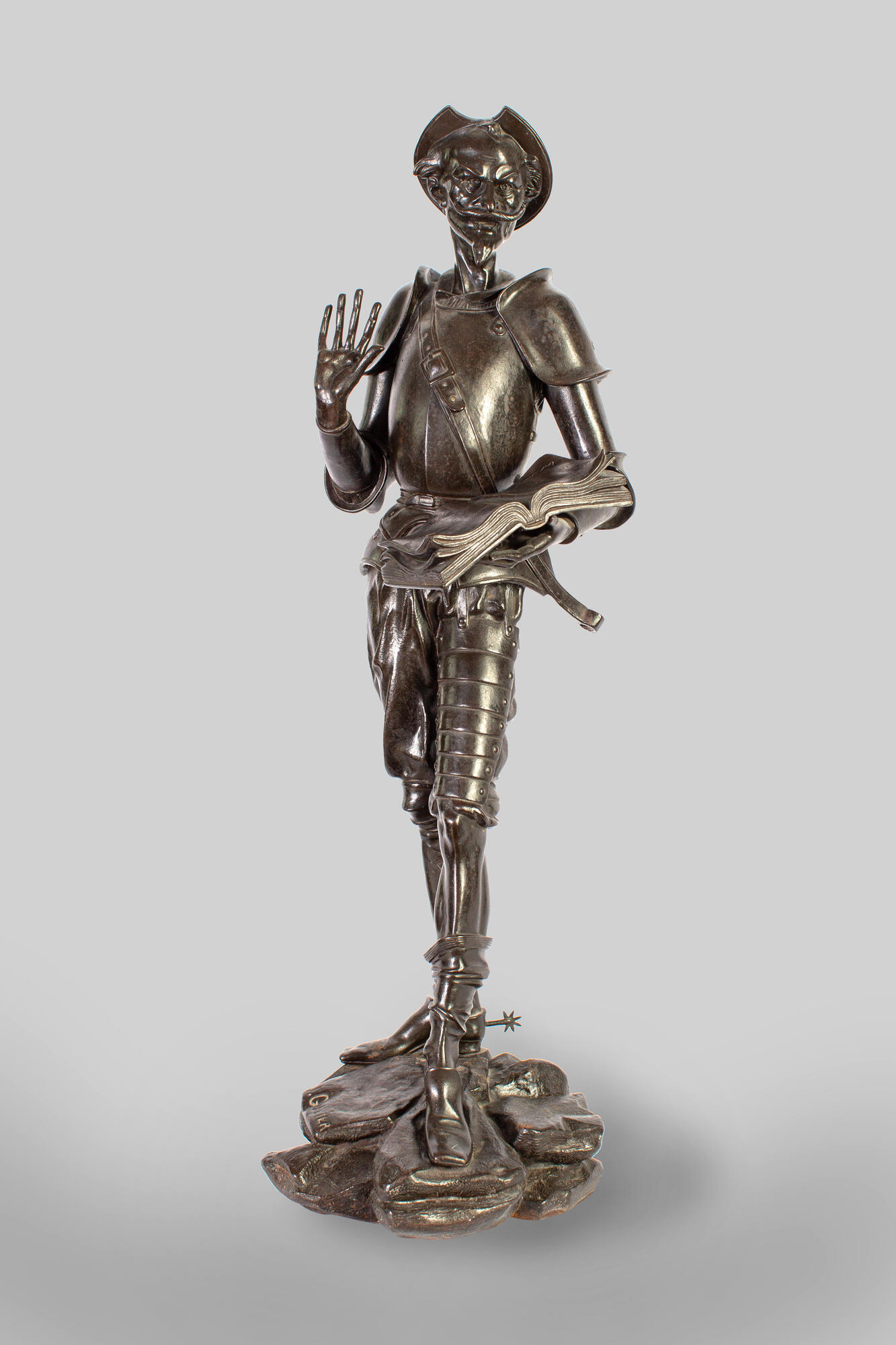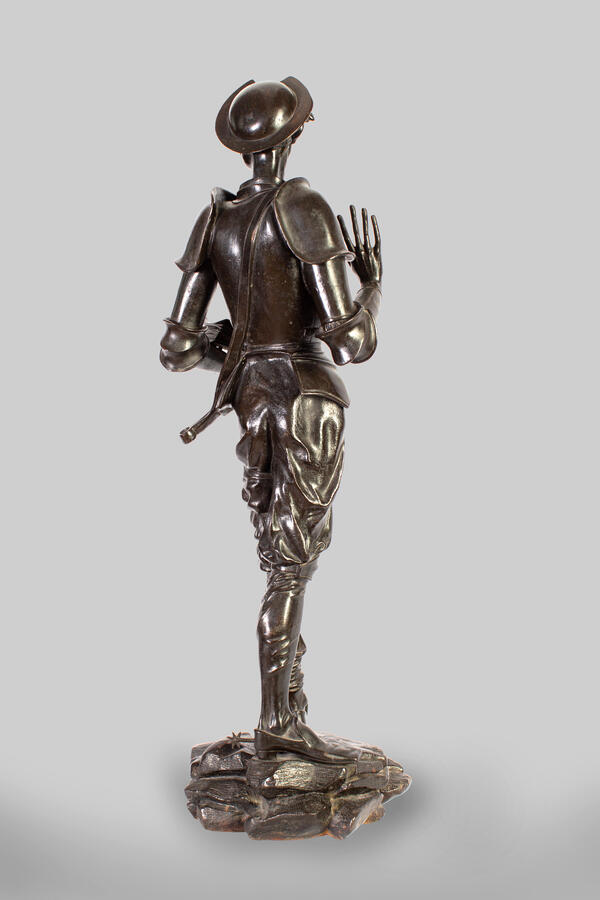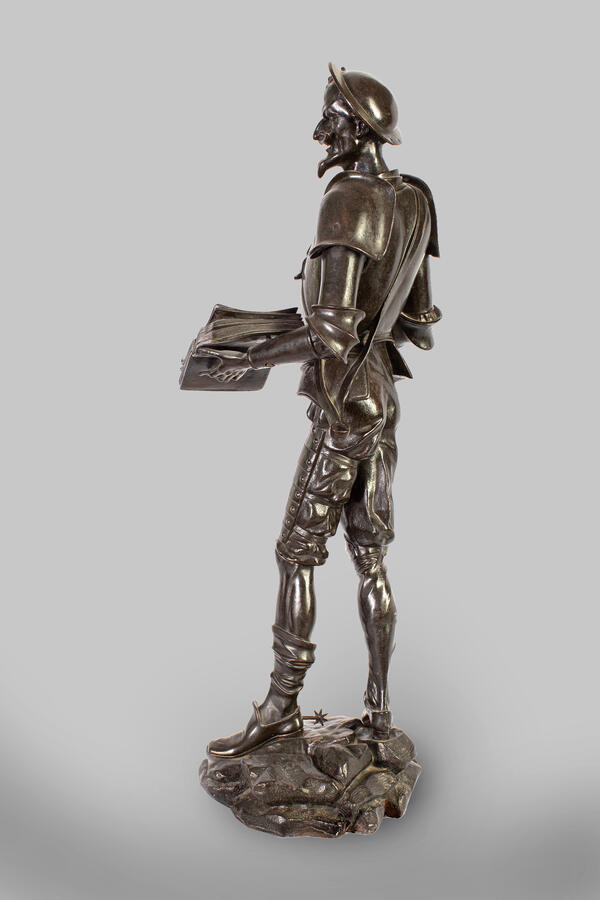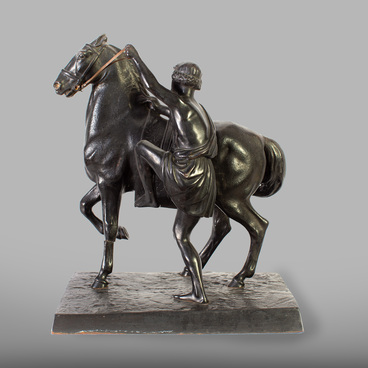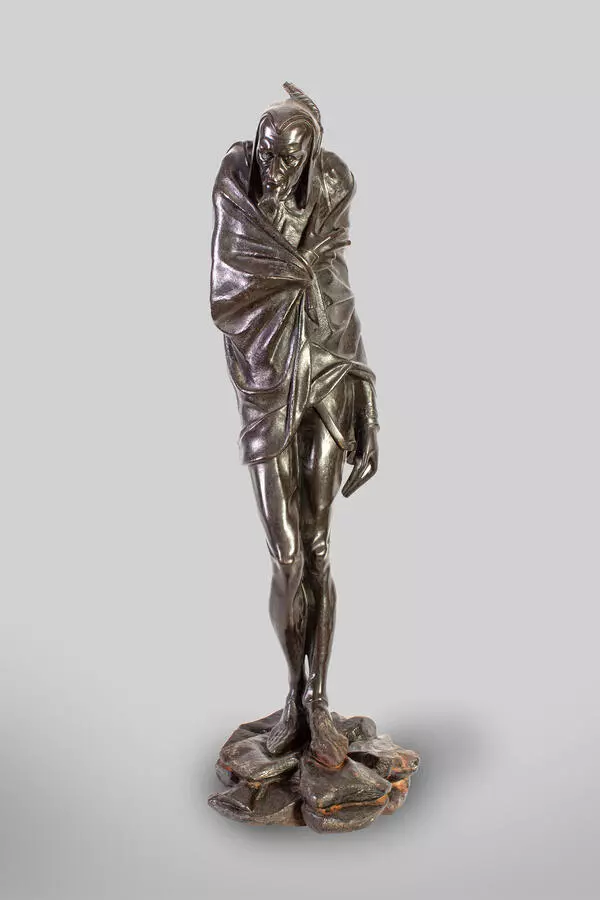The Tambov Art Gallery houses a figurine “Don Quixote”, cast at the Kasli Iron Foundry. The work “Don Quixote” can be attributed to Western European sculpture only to some extent. It was cast using the model of the French sculptor Jacques-Louis Gauthier, so, like any work of a professional sculptor that was molded and chiseled by folk craftsmen, it became a piece of folk art as well. The figurine was bought from E.I. Dabich in 1920.
Don Quixote is a poor Spanish nobleman and the protagonist in a novel called “The Ingenious Gentleman Don Quixote of La Mancha”, a classic of world literature written by Miguel de Cervantes. Don Quixote has become a household name and is used to describe people whose nobility, generosity and chivalry suffer a harsh collision with reality. In a broad sense, Don Quixote is a symbol of goodness.
The Kasli plant had been casting this sculpture since 1887. The figurine is one of the most famous Kasli casting works made by foreign sculptors. A full-length figure of armor-clad Don Quixote, with a smallsword on his left side and an open book in his left hand, is a figurine that goes together with another Jacques-Louis Gauthier’s sculpture — “Mephistopheles”. The two embodied the main ethical concepts of good and evil. The figurines adorned one of the entrances to the famous Kasli Cast Iron Pavilion, made for the 1900 Paris Exposition. The pavilion was exhibited in the 11th group of the Mining and Metallurgy Section and received the highest award. The items made by the Kyshtym mining district were awarded the Grand Prix “Crystal Globe” and a Big Gold Medal. According to legend, the President of France wanted to buy the pavilion and all the products, but the deal never took place. The manager of the Kasli plant, Pavel Mikhailovich Karpinsky refused to part with the work of Nikolay Akimovich Laveretsky called “Russia”, saying “Russia is not for sale” to the French president. In 1978, the Kasli pavilion was included in UNESCO’s World Heritage List as a unique monument of world significance and the only architectural structure made of cast iron.
Don Quixote is a poor Spanish nobleman and the protagonist in a novel called “The Ingenious Gentleman Don Quixote of La Mancha”, a classic of world literature written by Miguel de Cervantes. Don Quixote has become a household name and is used to describe people whose nobility, generosity and chivalry suffer a harsh collision with reality. In a broad sense, Don Quixote is a symbol of goodness.
The Kasli plant had been casting this sculpture since 1887. The figurine is one of the most famous Kasli casting works made by foreign sculptors. A full-length figure of armor-clad Don Quixote, with a smallsword on his left side and an open book in his left hand, is a figurine that goes together with another Jacques-Louis Gauthier’s sculpture — “Mephistopheles”. The two embodied the main ethical concepts of good and evil. The figurines adorned one of the entrances to the famous Kasli Cast Iron Pavilion, made for the 1900 Paris Exposition. The pavilion was exhibited in the 11th group of the Mining and Metallurgy Section and received the highest award. The items made by the Kyshtym mining district were awarded the Grand Prix “Crystal Globe” and a Big Gold Medal. According to legend, the President of France wanted to buy the pavilion and all the products, but the deal never took place. The manager of the Kasli plant, Pavel Mikhailovich Karpinsky refused to part with the work of Nikolay Akimovich Laveretsky called “Russia”, saying “Russia is not for sale” to the French president. In 1978, the Kasli pavilion was included in UNESCO’s World Heritage List as a unique monument of world significance and the only architectural structure made of cast iron.
